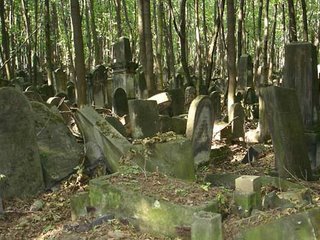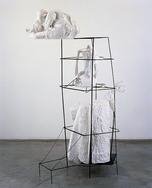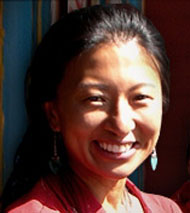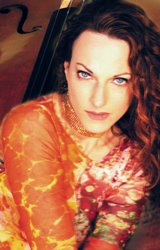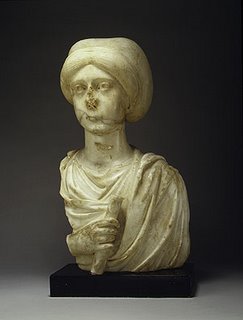A Flowering Tree, An Opera
Music by John Adams
Libretto by John Adams and Peter Sellars adapted from the ancient Indian folktale and poetry in translations by A.K. Ramanujan.
A Flowering Tree was commissioned as part of the Vienna
New Crowned Hope Festival to celebrate the 250th anniversary of Mozart’s birth. It takes as its model Mozart’s The Magic Flute, and its themes are magic, transformation and the dawning of moral awareness.
The Story
A Flowering Tree is based on a folktale from the Kannada language of southern India as translated by A.K. Ramanujan.
Kumudha, a poor but beautiful young girl, discovers that she has the magic gift of being able to turn herself into a flowering tree. Wanting to give comfort and support to her old and suffering mother, she asks her sister to help her perform a ceremony that will transform her body into a tree. The sister gathers up the flowers of the tree and Kumudha returns to her human form. They sell the flowers in the town marketplace and give the money without explanation to their mother.
A young Prince, hiding in a tree, spies on Kumudha during one of her transformations. Enchanted and troubled by both her beauty and her magic abilities, he demands of his father, the King, that Kumudha be brought to the palace so that he can marry her.
On the night after their wedding Kumudha enters the bridal chamber only to find the Prince silent and sullen. Several nights pass without him speaking to her or touching her. Finally he makes his demand: she must do her transformation for him. Kumudha, ashamed, resists, but finally relents and performs the ceremony for him.
The Prince’s jealous sister, suspicious of Kumudha, hides in the royal bedroom and sees the ceremony and transformation take place. The next day, while the Prince is away, she taunts Kumudha and commands her to perform the ritual for her and a group of her wealthy young friends. Kumudha reluctantly assents, but the bored young people lose interest and leave her in the midst of a rainstorm, not having completed her return to her human form.
Kumudha, now a hideous freak--a stump of a body, half tree and half human--crawls into a gutter, where she is found by a roving band of minstrels.
The Prince does not know what has happened to his young wife. He assumes his arrogance has made her leave the court forever. Full of remorse, he leaves the palace, becoming a beggar and wandering mute and aimlessly through the country.
Time passes. The Prince, haggard and almost unrecognizable, comes to the palace courtyard of a distant city. The new Queen of this city is his sister, she who had taunted Kumudha. In shock, the Queen recognizes her brother and brings him into the palace, bathing and feeding him. But he will not utter a word and only lies lifeless in his bed. In the town marketplace, several of the queen’s maids see the minstrel troupe and hear the beautiful singing of a freakish thing with neither hands nor feet. They bring this strange and misshapen torso to the palace and suggest that its beautiful singing might revive the Prince. Not knowing that this is Kumudha, the Queen orders her to be bathed and covered with scented oils and brought to the Prince’s bed.
Alone, Kumudha and Prince recognize one another. They are both overcome with grief and then with joy. He takes two pitchers of water and performs the old ceremony. Kumudha returns to her human form.
*
First performances: November 14, 16, 17 & 19, 2006, MuseumsQuartier, Vienna. Orquesta Simón Bolívar and Schola Cantorum of Caracas, John Adams, conductor. Storyteller: Eric Owens; The Prince: Russell Thomas; Kumudha: TBA
Further performances: Berlin Philharmonic, Simon Rattle, cond., December 21& 22, 2006; San Francisco Symphony, John Adams, cond., March 1, 2 & 3, 2007; London Symphony, John Adams, cond., Barbican Center, Aug. 10 & 12, 2007
Commissioned by New Crowned Hope Festival, the Berlin Philharmonic, the San Francisco Symphony, the Barbican Center and by Lincoln Center.
Lyric soprano, tenor, baritone; picc, 2 fl, 2 ob (2=Eng hrn), soprano recorder, alto recorder, 2 clar, bass cl, bsn, contrbsn (=bsn); 4 hrn, 2 tpt, timpani, 2 percussion, harp, celesta and strings.
SATB chorus (minimum 40)
Duration: approx 2.5 hours with intermission
Publisher:
Boosey & Hawkes Source: (c) John Adams and his
Earbox 2006. All rights reserved.

Kumudha, after she is returned from the
liminal world and restored to truly human form.
Photo credit:
www.srivaishnavam.com. With thanks.
*
A River In Madurai,
city of temples and poets,
who sang of cities and temples,
every summer
a river dries to a trickle
in the sand,
baring the sand ribs,
straw and women's hair
clogging the watergates
at the rusty bars
under the bridges with patches
of repair all over them
the wet stones glistening like sleepy
crocodiles, the dry ones
shaven water-buffaloes lounging in the sun
The poets only sang of the floods.
He was there for a day
when they had the floods.
People everywhere talked
of the inches rising,
of the precise number of cobbled steps
run over by the water, rising
on the bathing places,
and the way it carried off three village houses,
one pregnant woman
and a couple of cows
named Gopi and Brinda as usual.
The new poets still quoted
the old poets, but no one spoke
in verse
of the pregnant woman
drowned, with perhaps twins in her,
kicking at blank walls
even before birth.
He said:
the river has water enough
to be poetic
about only once a year
and then
it carries away
in the first half-hour
three village houses,
a couple of cows
named Gopi and Brinda
and one pregnant woman
expecting identical twins
with no moles on their bodies,
with different coloured diapers
to tell them apart.
-- A. K. Ramanujan
Source and credit: (c) A. K. Ramanujan. All rights reserved.
Submitted to the World Wide Web by
Suresh Ramasubramanian. With thanks.
*
John Adams's
Doctor Atomic Symphony is based on orchestral music from the opera. Among the music incorporated and reworked into this 30-minute symphony are passages from the overture, Oppenheimer’s Baudelaire soliloquy, the electrical storm music, “Batter my heart”, and the culminating “Countdown” music. It will receive its premiere by the Saint Louis Symphony, under David Robertson, early next year. The Symphony is reported to only include acoustic instruments, and not the electro-acoustic instruments used in the opera score.
Score and parts for the Doctor Atomic Symphony will be available from Boosey & Hawkes, Inc. beginning in early 2007.
A music sample is available at the above link.

